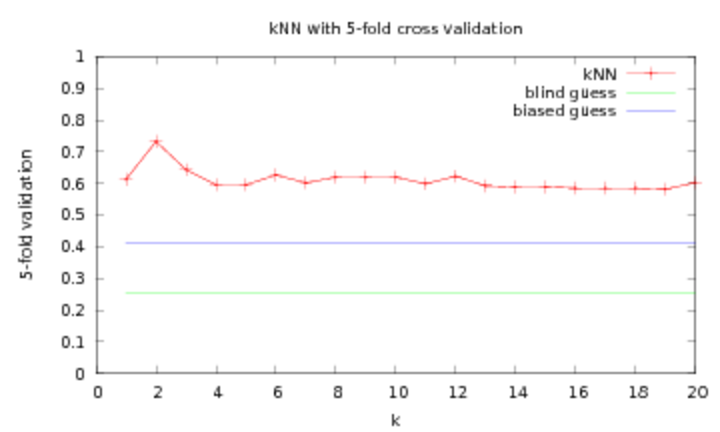5 ALGORITHMS and PERFORMANCE
We have implemented k-nearest-neighbor classification and have partially written code for classification by feed-forward neural networks. We may also experiment with other classification algorithms.
kNN with 5-fold cross validation currently gives us the following result for classifying pieces as romantic, classical, baroque, or hymn:
As is shown, we do significantly better than blind or biased (biased based on the number of samples of a particular style) guessing. We do not, however, do quite as well as we had hoped, since we had hoped to equal results achieved by prior work, such as 4. They achieved results of 85%-99% correct classification; however, they used up to 100 features, many more than we do, so we hope that with added features we can see the same performance. Also, we currently use a euclidean distance function, which handles boolean features poorly and is not tuned to the relative importance of features for classification. Correcting this should also yield a gain over this initial performance. We have not yet been able to achieve satisfactory performance classifying composers.
